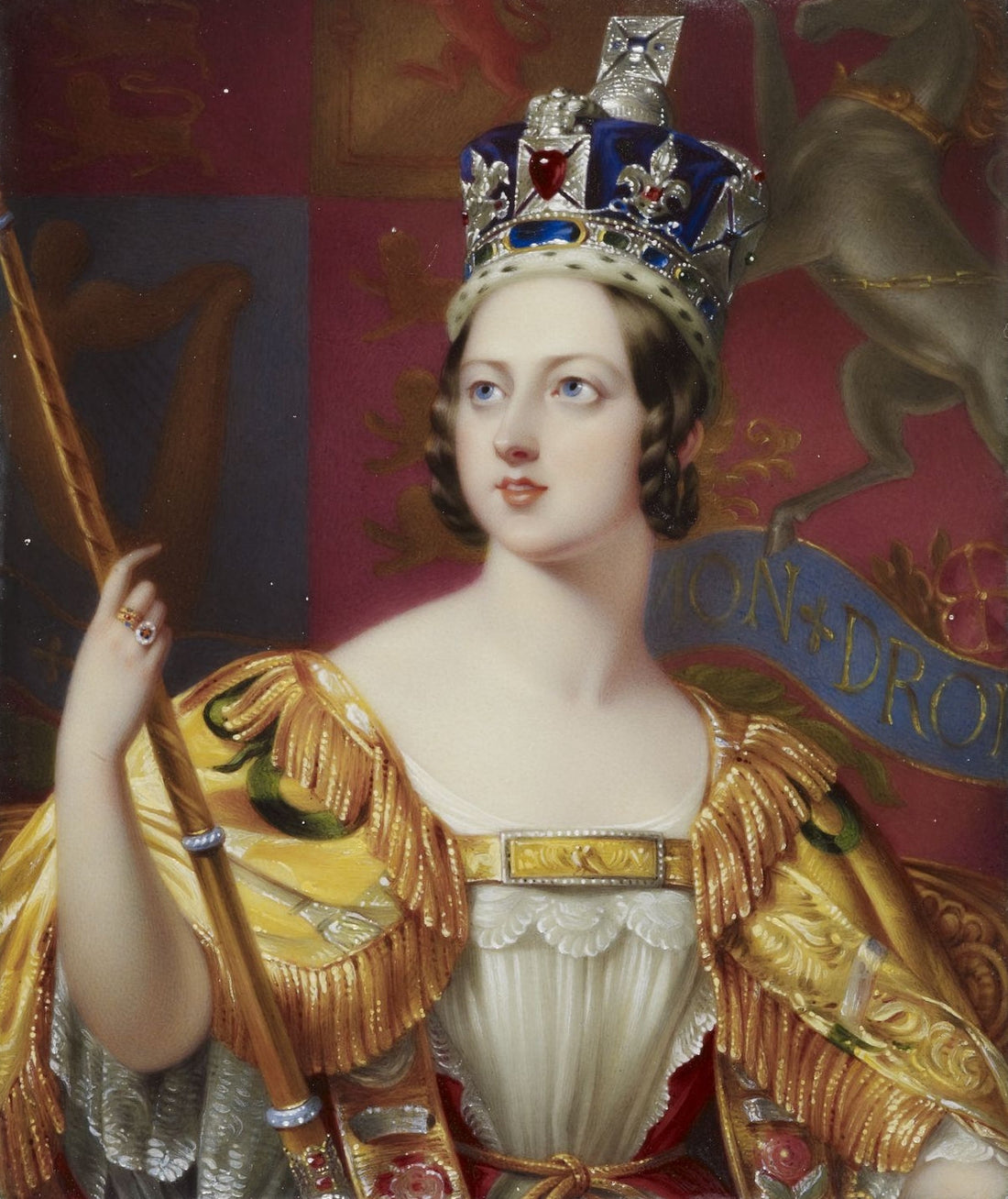
Wear at Your Own Risk - Cursed Gemstones Throughout History Part 3
by Kat Paulick
Throughout history, jewels have dazzled and destroyed in equal measure. From royal treasuries to Hollywood collections, certain gemstones seem to carry with them more than just beauty—they bear misfortune, betrayal, and blood. In this third installment of our Cursed Gemstone Series, we delve into two of the most infamous treasures ever to pass through royal hands: the Black Prince’s “Ruby,” a crimson spinel steeped in centuries of death and deceit, and La Peregrina Pearl, whose trail of heartbreak spans monarchs, empires, and movie stars alike.

Black Prince's "Ruby" in the Imperial State Crown. Image: Wikipedia
The Black Prince’s Ruby
In fourteenth-century Spain, Prince Abu Sa’id of Granada could feel his power slipping away. Under attack by Don Pedro of Castile, who sought to reconquer Spain from the Moors, Sa’id’s army was weakened. He knew he must negotiate his surrender. The two rulers planned to meet in 1366 to discuss terms, but Don Pedro, nicknamed “Pedro the Cruel” for his penchant for brutal murder, had no intention of peace.
When Prince Sa’id arrived for negotiation, he and his party were ambushed by Don Pedro and slaughtered in cold blood. Don Pedro was richly rewarded for his conquest (or so he thought) with a massive red gemstone he found while searching Sa’id’s slain body. He thought it to be a ruby, though testing centuries later revealed it to be another red stone known as a spinel.
Don Pedro’s luck quickly took a turn for the worse as his brother, Henry of Trastámara, declared war on Castile for the throne. Pedro enlisted help from the English King Edward III, who sent his son Edward of Woodstock (known as “the Black Prince” for his brutality on the battlefield) to help defeat Henry. Though they were victorious, Pedro had to relinquish the “ruby” as payment to Edward, and just three years later, Henry murdered Pedro and assumed power anyway.

Decapitation of Don Pedro, Manuscript from 15th century.
Public domain, via Wikimedia Commons
Though Edward the Black Prince was in line for the English throne, he would never rule, dying from disease and leaving the gemstone to his son, Richard II. Richard also suffered a premature death, being murdered at age 21 by Lancastrian King Henry Bolinbroke IV. Bolinbroke assumed the throne and the stone, but died shortly later from a slow illness. As death and disease claimed king after king, people began to wonder if the stone was harboring a curse born from the cruel murder of its original owner.

Painting of Queen Victoria by Henry Pierce Bone, 1843. Public domain, via Wikimedia Commons
Today the Black Prince’s Ruby is mounted in the Imperial State Crown, and resides in the Tower of London.
La Peregrina Pearl

Portrait of Elizabeth of Bourbon, Queen of Spain by Peter Paul Rubens, 1628.
Public domain, via Wikimedia Commons
In sixteenth-century Isla Margarita, an enslaved African stumbled upon something that would change his life: a giant pearl, pear-shaped, beautifully symmetrical, and weighing 11.2 grams. In exchange for the pearl, the slave was granted his freedom - potentially the best thing to happen to anyone as a result of this storied gem. The administrator of Panama at the time, Don Pedro de Temez, acquired the pearl and then gifted it to King Phillip II of Spain. Phillip was so enamoured with the pearl, he elevated it to the rank of a Spanish Crown Jewel.

Portrait of Margaret of Austria by Juan Pantoja de la Cruz, 1606.
Public domain, via Wikimedia Commons
The Pearl was worn by Spanish royalty for the next few centuries, potentially playing a part in the murder of Spanish Queen Isabel’s lover, the poet Peralta. In 1813 it was stolen by Joseph Bonaparte as he fled Spain following defeat in battle. His brother Napoleon owned it briefly before selling it to an English duke, whose family eventually placed it for auction by Sotheby’s.
La Peregrina was purchased for $37,000 by Hollywood royalty Richard Burton, who bought it as a Valentine’s Day gift for his wife, Elizabeth Taylor. The couple had met on the movie set of Cleopatra while both married to other people, and embarked on a highly public, scandalous, and tumultuous relationship. A passionate yet destructive love marked by alcoholism and infidelity, the pair couldn’t make marriage work despite trying it twice - their second marriage ending in another divorce just months later.

Richard Burton & Elizabeth Taylor in Cleopatra. Courier-Gazette, McKinney, TX Photo from 20th Century Fox, producer of the film., Public domain, via Wikimedia Commons
Elizabeth Taylor’s epic romantic life included seven husbands and eight divorces. Though the Peregrina Pearl wasn’t the only cursed gem in her collection - the Krupp diamond is also rumored to cause misfortune - Taylor dismissed any allegations that her jewels were the cause of her sorrows.
Whether curse or coincidence, legends of unlucky gemstones have persisted through history. Perhaps their power lies simply in the lengths humans will go to attain them - but perhaps, under their hypnotizing beauty, they hold dark and mysterious forces beyond our understanding...
